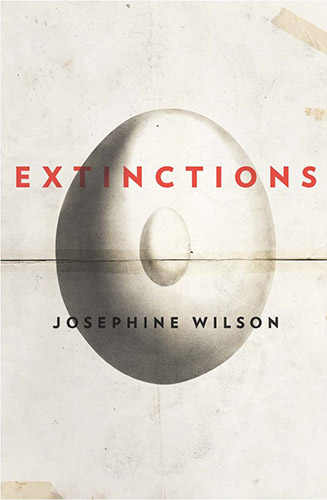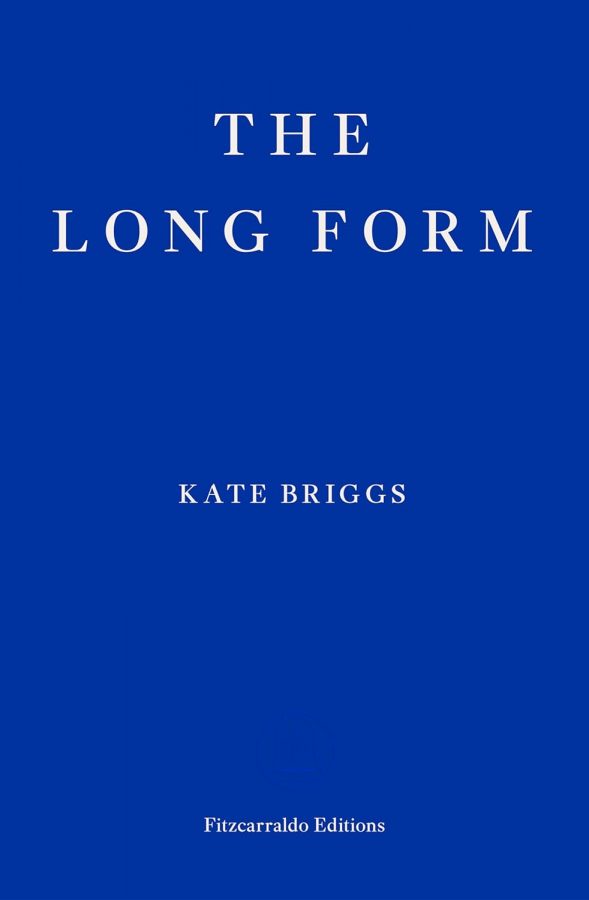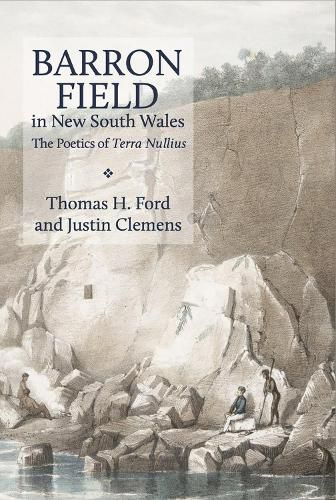James Fenimore Cooper’s 1823 novel The Pioneers, the first of the five books known collectively as ‘The Leatherstocking Tales’, introduces the character that has come to epitomize, in general parlance, any person or thing that is the last of its kind. The territory of New England, the narrator informs us, was once occupied and ruled by two Indian nations, the Iriquois and the Delawares. Among the latter ‘was one race, particularly famous for their [martial] prowess, and for those qualities that render an Indian hero celebrated.’ This race was the ‘Mohicans, or Mohegans’:
But war, time, disease, and want, had conspired to thin their number; and the sole representative of this once renowned family, now stood in the hall … He had suffered severely, in his family, during the recent war, having had every soul to whom he was allied, cut off by an inroad of the enemy; and when the last, lingering remnant of his nation, extinguished their fires, amongst the hills of the Delaware, he alone had remained, with a determination of laying his bones in that country, where his fathers had so long lived and governed.
He who ‘alone had remained’ calls himself, in the Delaware language, Chingachgook, meaning ‘Great Snake’. The settlers call him John Mohegan, a ‘mournful appellation’ that identifies him with his extinguished people – or, as Cooper phrases it, with ‘his nation in ruins’.
Such lone figures haunted the Romantic imagination. Only a few years before Cooper wrote The Pioneers, Mary Shelley had explored the idea of a creature that was the first as well as the last of its race, the man-made monster of Frankenstein. For the monster, existence is torture, and not only because of the cruelty he experiences at the hands of human beings. The deeper cause of his extreme suffering is his singularity, the fact that he is one of a kind. ‘When I looked around, I saw and heard of none like me.’ The monster has no parents, no siblings, no ancestors, no friends. He can have no mate, and therefore no offspring. There is no one who can understand his situation and, even more fundamentally, there is no other face in which he can see reflected a glimpse of his own.
John Mohegan’s tragedy is that all of his family and his tribe have died. The tragedy of Frankenstein’s monster is that he never had either to begin with. These two tropes of Romantic agony lie at the heart of Josephine Wilson’s Extinctions, a novel about Australia’s Stolen Generation, but also about migration, gender, and the deep traumas of family life. Like The Pioneers and its prequel, The Last of the Mohicans, Extinctions is concerned with how individuals and families survive – or don’t – colonialist histories of dispossession and genocide. And like Frankenstein, it explores the psychological stress and profound loneliness suffered by those forced to exist with no sense of genealogy or group identity.
‘A family was something to fear, like a long, dark tunnel cutting through a mountain. Who knew if you would come out the other side alive?’ In Extinctions the nuclear family is a place of ‘devotion, and loathing’. A needy, destructive father crouches at its centre, orbited by a hapless wife and children who struggle and fail to meet his requirements. Those requirements are obscure even to the father himself and this obscurity is part of the compounding complex of fear and shame in which the family is bound. It’s a father, not a wife or a child, who has the thought quoted at the beginning of this paragraph. What is he so afraid of? He is afraid of himself, and of the legacy of familial distress he carries with him.
Frederick Lothian, English immigrant, retired professor, theoretical engineer, widower and father of two, supplies the point of view for most – but not all – of the narrative. Early in the novel we’re given a key insight into the way Fred embarked on his life as a husband and father. It’s an insight with which many readers will ruefully identify.
He and his generation had thought they were a different species from their own parents. They thought their parents would die out and take their petty misery and prejudice with them, and be replaced by a brand-new generation who were free of their blinkers and their leather straps, who would never stand in the way of their girls and boys. They would not damage their children as they had been damaged. Their children would not be expected to make up for their parents’ lost opportunities.
The narrator’s use of the pluperfect tense, ‘had thought’, is the signal that this view of Fred’s is both delusional and in the process of being exposed as such. Fred has always been a staunch disbeliever in the science of psychology: ‘These therapists are all charlatans. … No child of mine is ever going to therapy. Not that they’ll ever need to.’ Consequently, he has been ill-equipped to understand that, like most people, he has unconsciously repeated or been attracted to behaviours that were present in his childhood family. Thus his choice of a domineering best friend who was ‘more than a bit like his dead father’. Thus his daughter Caroline’s long attachment to her hopeless boyfriend Julian, whom Fred dismisses as ‘a complete narcissist’, not realizing, as she does, that it ‘[t]akes one to know one’. And thus Fred’s capacity for cruelty towards his wife and son, usually expressed in words or silence or by withholding affection, but on one appalling occasion spilling over into the physical violence with which he himself had grown up: ‘He hit his four-year-old son on the face with the back of his hand, as his father had hit him and his father’s father had hit him, begetting and begetting.’
Philip Larkin’s often-quoted poem ‘This Be The Verse’ was in my mind almost constantly as I was reading this novel.
They fuck you up, your mum and dad.
They may not mean to, but they do. …
Man hands on misery to man.
It deepens like a coastal shelf.
While the primary action of Extinctions extends over only nine days, the flashbacks through which Fred tries to make sense of his present situation include memories of his whole life, as the child of one family and then the father of another. These retrospections reveal that even while he planned and, as he thought, executed his escape from it, he had unwittingly been carrying on the inheritance he received from his parents and grandparents, the ‘family business of perpetual misery’. It is an insatiable mill in which his wife, his son and daughter, and his own hopes and dreams have all been ground.
In the perfect storm that is the plot of Extinctions, this destructive force intersects with other personal and national catastrophes. Fred’s warm-hearted wife Martha, who wanted ‘at least four children’, finds herself treading a lonely path of infertility and miscarriage. A young Aboriginal woman named Carol gives birth to a little girl for whom she struggles to care. The government policy of removing Aboriginal children from their families officially ends, but associated social attitudes about race and child welfare linger on. These disparate events come together through the Lothians’ decision to adopt an Indigenous child, Caroline. The act ‘was meant to be a replacement for all the things that did not happen to Martha and Frederick, and a reparation for the past’, but it actually perpetuates both national and familial wrongs.
Is it worse to be locked into the chain — the chain-gang — of generations, or to be cut adrift from it? ‘Fathers! sons! … all gone – all gone!’, laments John Mohegan, the last survivor of his race in Cooper’s The Pioneers. In Extinctions Fred Lothian puts a hemisphere between himself and his father, and an impenetrable entanglement of barbed emotions between himself and his son — yet he cannot escape reliving the family history of paternal-filial trauma. Young Caroline Lothian comes home from school crying and tells Martha ‘I am the only one in the whole school who doesn’t look like her mother and father’. Caroline carries in her facial features no readable evidence of generation: ‘She could be from anywhere’. In contrast, it is completely clear where Fred Lothian comes from. He looks in the mirror at ‘his father’s mouth, his mother’s cheeks, and the high forehead and sharp nose of his gran’. He thinks of their unvisited graves on the other side of the world and pictures himself travelling back to tend them, as if such an act of filial piety might liberate him from the burden of his ancestral inheritance. Yet, in one of many failures of empathy, he denies his daughter Caroline the opportunity to enact such a ritual of mourning, when he throws away all her mother’s clothes before she has the chance to do ‘a daughter’s job’, the work of sorting through her dead mother’s things. This denial inflicts on Caroline a deep loss. ‘He had taken away her right to be a daughter, a right she had had to fight for all her life’.
Another adopted character in Extinctions, Jan Venturi, explains that ‘the hardest thing about not knowing your biological mother or father is that you feel so alone. It’s like being the first of a brand-new species – or the last. One of those sad, old beasts in some horrible zoo with a plaque saying, “The Last of the Something or Others”’. Jan’s comment focuses the novel’s concern with the connections between different, but similarly traumatic, experiences of singularity. Monster or Mohican? First or last — or both? The yoking of adoption and extinction, intuitive on Jan’s part, is deadly accurate in Caroline’s case, where adoption has taken place against the background of a genocidal government policy. While the novel makes this connection explicit, it is also very much concerned with a third term that is implicitly part of the same equation — migration.
As migrants to Australia, one from England and the other from the United States, Fred and Martha are both, in a sense, adoptees (having been adopted into a national ‘family’ into which they weren’t born), while also being the originators of a brand-new species of Jewish-American-British Australians. But this new species is destined to be short-lived. The domestic catastrophe for which Fred is largely responsible means that Martha will not experience the sense of generational continuity she would have enjoyed if their second child Callum, the son she and Fred unexpectedly conceived two years after Caroline’s adoption, had followed his plan of going to the US to study. It also means that Fred will not see his inherited features and gestures, so clearly visible in his son, passed on to a further generation. The Lothian line, as a genetic inheritance, is going to die out — Fred and Callum will be the last members of this biological family. And what of Caroline? What will she carry forward and pass on from her parents, and to whom?
In one scene, Caroline sits alone in her basement flat in London, where she is doing academic research, and wonders if she should go to the club down the road to find a partner for casual sex. ‘[B]ut why bother? For a woman close to extinction, sex was merely palliative.’ This eye-catching statement suggests that Caroline, like the monster in Frankenstein, is unable to reproduce because there exists in the world no creature of the same species with whom she can mate. It’s a powerful expression of Caroline’s overwhelming loneliness, her sense of being unmoored and unmirrored in the world, her feeling that she has no future, and her fear that in some fundamental way she doesn’t really exist, or can’t continue to. All this is both racial and cultural, and has deep roots in the particular conjunction of personal and national histories that has marked Caroline’s life-story. Simpler anxieties about gender and ageing also play their part. To feel like ‘a woman close to extinction’ could be the feeling of any thirty-seven-year-old woman who has spent too many years with the wrong boyfriend and now sees her chances of procreating diminishing before her. But to be in this position in addition to being adopted, racially dispossessed, the child of migrants, and still in mourning for the mother she knew as well as the one she didn’t — this puts Caroline right at the centre of what she herself calls, rather self-consciously, ‘the drama of extinction’.
Caroline’s academic interest in the history of species-extinctions is a clear expression of her feelings about her own situation. The long central section narrated from her point of view (there is also a shorter one at the end) is interspersed with photographs of dead or caged animals from now-extinct species and quotations from texts, mainly American, that bear witness to the historical slaughter of these creatures. An extract from James Audubon’s account of the slaughter of Carolina Parakeets by early settlers in Cincinatti reminded me of a similar scene in Cooper’s The Pioneers, in which the entire settlement engages in a frenzy of violence against the flocks of pigeons that arrive each spring. Guns, arrows, missiles, even an old cannon are used to maximize the killing. One settler ‘armed with an old musket, was loading, and, without even looking into the air, was firing, and shouting as his victims fell even on his own person’. Only Natty Bumpo, who is a kind of anti-pioneer, stands apart and laments the wastefulness and cruelty of the settlers’ actions:
‘This comes of settling a country!’ he said – ‘here have I known the pigeons to fly for forty long years, and, till you made your clearings, there was nobody to skear or to hurt them. I loved to see them coming into the woods, for they were company to a body; hurting nothing; being, as it was, as harmless as a garter snake. … Well! The Lord won’t see the waste of his creaters for nothing, and right will be done to the pigeons, as well as others, by-and-by.’
A reference by the narrator of The Pioneers to the pigeons as ‘the feathered tribe’ suggests a connection between their fate and that of the Mohicans, the all-but extinct race that once roamed the same land, and Natty’s remark about ‘others’ encompasses a range of victims, both human and animal, of the settlers’ conquest of the territory. In Extinctions, Josephine Wilson implies similar connections between the personal, the political, and the ecological in her juxtaposition of photographs and fragments of historical texts with her modern narrative.
The book’s intermediality raises questions about that staple of all narrative theory and practice, point of view. In the classic terminology given us by novelist Henry James, Extinctions employs multiple centres of consciousness. Although narrated in the third-person, it uses characters as filters of the action and eschews an omniscient authorial voice. Parts of the narrative are presented from Caroline’s and from Jan’s points of view, but the vast majority of the text is filtered through the consciousness of Fred Lothian. The combination of wilful blindness, lack of self-insight and straightforward absence of knowledge makes Fred an often unreliable or inconscient narrative centre, so the reader’s job is to think past his point of view, to be alert to its shortcomings and to infer the truths that transcend it. Some of these truths are confirmed from the viewpoints of other characters, while Fred gradually comprehends others for himself over the course of what, to use another Jamesian phrase, we could call his ‘ordeal of consciousness’.
How do the photographs relate to this narrative scheme? There are about thirty images scattered through the text, their worldly provenance clearly stated in a series of footnotes at the end of the book. But what is their narrative provenance? Do they manifest an authorial point of view? Do they function, like the narrator’s digressions in Tom Jones, as a framing commentary on the action, helping the reader to know how to contextualize the action, what to think and how to judge? Do they suggest, by inviting the reader to look exactly where the author has looked, a shared gaze, even shared values, such as George Eliot invoked when she addressed her readers from the sidelines of her stories?
Many of the photographs that are not of extinct animals or birds are images of objects mentioned in the text as being in the possession of Fred Lothian. An eminent concrete engineer and frustrated would-be architect, Fred is obsessed with twentieth-century design and its expression in consumer products. Some of the items depicted, such as the Marcel Breuer designed ‘B3’ chair, have an important function in the plot. Others, such as the Braun SK6 turntable and radio, have a more symbolic value within the narrative. There are also images of engineered structures that were important in Fred’s professional or personal life.
Because engineering metaphors are so important to the narrative design of Extinctions — they provide the titles of four of the five ‘books’ into which the novel is divided — the reader’s attention is drawn to these images with some urgency. It seems important to understand the shape of a hyperbolic paraboloid or the design of a B3 chair. But while they have a straightforwardly illustrative value, the photographs and drawings also, for me, came to suggest a rebuke of Fred’s ‘loyalty to objects’, of his preference for engaging with things rather than people. Excepting perhaps the photograph of the TWA terminal at JFK airport, in my experience of reading the novel the visual referents for the various engineered objects admired by Fred lacked the aura carried by those objects in their verbal descriptions. The recurrent feeling for me was one of bathos. Who could love these things more than a family and protect them more carefully than he would protect a child?
Frederick Lothian is a deeply flawed, emotionally stunted, at times repellent character. He has grave sins, both of omission and commission, on his conscience. He has contributed, with varying degrees of responsibility, to the destruction of three young lives. To speak of relationship breakdown does not begin to cover the amount of damage he has done to his marriage. Watching Fred grope his way towards self-insight and accountability is an experience both painful and fascinating, and I found his character convincing as the product of a particular childhood in particular historical conditions. I did, though, run into two problems of plausibility. One was that he seemed to me much older than his sixty-nine years — although perhaps this in itself is a reflection of his personality. The other, more serious, problem was that I could not see what it was that could ever have attracted Martha to him. The marriage is presented as, from the start, a mismatch, but it seems to me important to believe that Martha was once so in love with Fred that she left family and country behind to accompany him to Australia, committing her future irrevocably to his. I don’t think we’re given enough evidence that Fred was ever appealing enough to make this happen.
One of Fred’s habits of thought is to describe himself, to himself (and once to Jan) as a monster; and indeed he asks himself the question, ‘How could anyone have loved such a monster?’ (Frankenstein’s monster, of course, asks himself similar questions.) This is one of the times when we have to read beyond Fred’s point of view, to discount the easy formulas on which he relies in what psychologists would call his ‘self-talk’, but also to dig down to the truths lurking within his metaphorical language. (At one point Fred thinks ‘Monsters had no need of poetic language. Metaphor was lost on monsters’, but the very fact that he describes himself as a monster shows that this isn’t true.) When Fred says to Jan ‘I am a monster’ and starts to cry, he is indulging in self-pity and perhaps fishing for the expected reassuring rejoinder, ‘no you’re not’ (which Jan doesn’t supply). But when his thoughts turn to a couplet from Dryden’s translation of the Aeneid Book 6 – for Fred fancies himself as something of a classicist – we’re given something more useful to work with:
Here dwells the monster, hid from human view
Not to be found, but by the faithful clew.
With this reference, Fred figures himself as the Minotaur, a creature of darkness to whom an endless series of youths must be sacrificed. How to destroy the monster and break the curse? The myth shows us that it is only possible by tracing a path to the deepest, darkest place where the monster lurks at the heart of his labyrinth, and then, crucially, tracing a way out again. To do this, Fred will have to rethink how he has always previously practised the archaeology of trauma: ‘Why was he digging up what was done when he’d just have to go bury it again?’ He has to learn to dig, and not to re-bury.
What is the relation between facing the past and being able to create a future? The novel ends not with Fred, but with its other main centre of consciousness, Caroline. This shift of focus restores historical and national contexts to the foreground of the narrative. A motherless child and childless would-be mother, Caroline has become a wanderer upon the face of the earth, searching for others ‘who understood the threat of extinction’ in whatever way that understanding might have come. Whether she will remain a prisoner of the past or of her own singularity, a last Mohican or a mateless one-of-a-kind, is a question Josephine Wilson leaves open at the end of the book, but there are suggestions of paths forward, forms of salvage and adaptation, and ways of creatively engineering a future.
Works cited:
James Fenimore Cooper, The Pioneers, 1823 (Oxford: World’s Classics, 1991).
Philip Larkin, High Windows (London: Faber, 1974).
Mary Shelley, Frankenstein, 1818 (New York: Norton, 1996)
Virgil, The Aeneid of Virgil, trans. John Dryden, ed. Robert Fitzgerald (New York: Macmillan, 1964).







